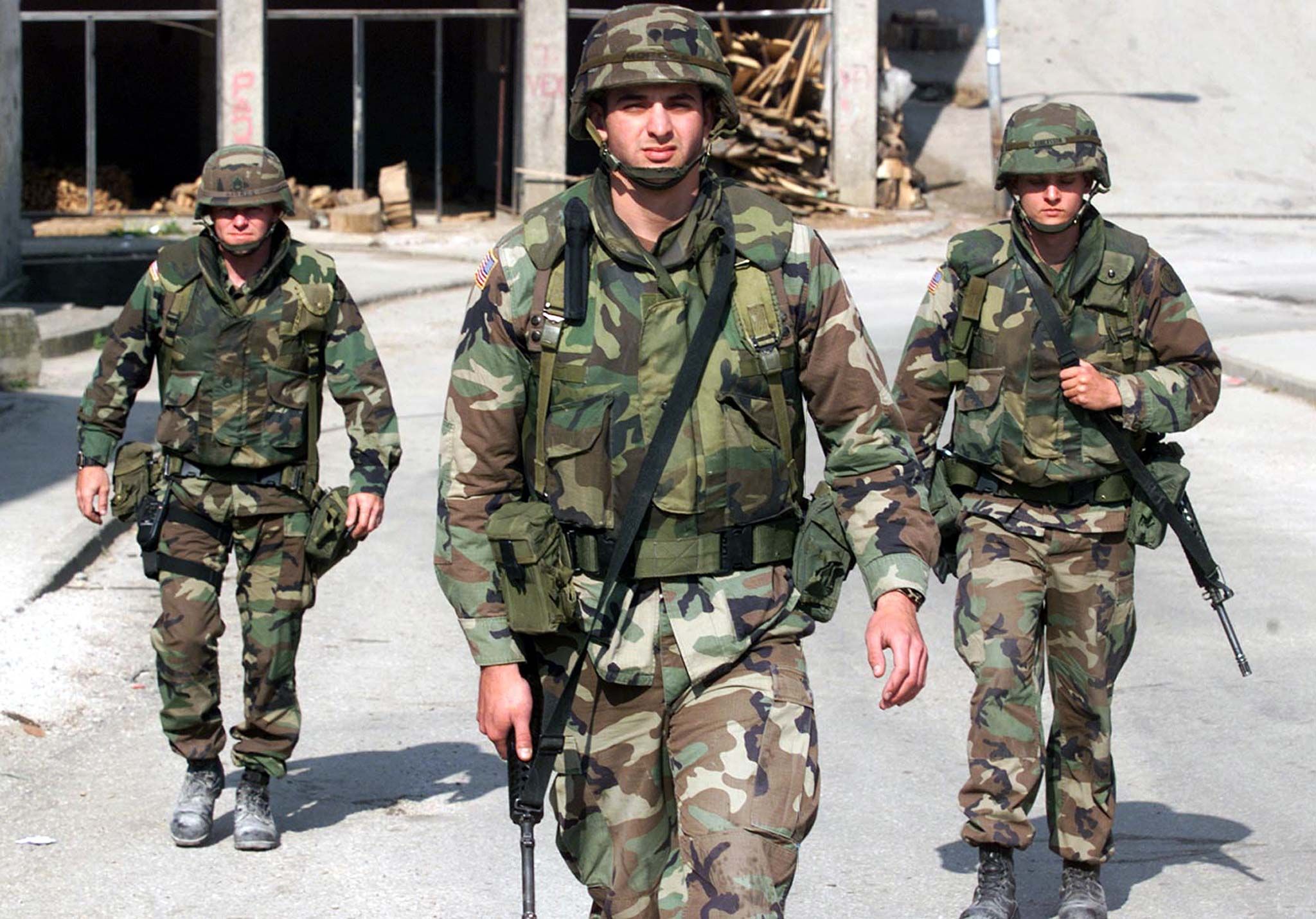The European Deterrence Initiative: Record and Perspectives

Origins and Goals of EDI
The programme, initially called the European Reassurance Initiative (ERI), was announced by President Barack Obama in Warsaw in June 2014 in response to Russia’s aggression against Ukraine. It provides additional funds for U.S. military activities in Europe. It is financed through the overseas contingency operations account, which is not under limits imposed after the previous economic crisis in the U.S. basic defence budget for 2012–2021. ERI received $1 billion in 2015, around $0.8 billion in 2016, and was expected to receive $3.4 billion in 2017. The Trump administration not only implemented Obama’s plans in 2017 but further increased funding of the initiative, now known as EDI, to $4.8 billion in 2018 and $6.5 billion in 2019. It subsequently requested $5.9 billion for 2020, but Congress again approved around $6.5 billion.
EDI focuses mostly on bilateral U.S. cooperation with allies. Nevertheless, it strengthens the overall ability of U.S. forces to fulfil Article 5 mutual defence guarantees and act within NATO. The initiative initially relied on more symbolic actions focused on reassurance of allies (such as the continuous presence of smaller units on the Alliance’s Eastern Flank). In 2017, the focus shifted to deterring Russia. This resulted in a partial rebuilding of the U.S. military footprint in Europe, reduced after the Cold War ended. In just 2012–2016, this presence decreased from around 80,000 to about 62,000 troops. Since 2017, this number has grown to around 70,000, mostly because of rotations of forces from bases in the U.S.
Main EDI Efforts
Every nine months, the U.S. Army rotates to Europe an Armored Brigade Combat Team with support units, altogether around 6,000 troops. In effect, the U.S. maintains three manoeuvre brigades in Europe (two lighter brigades are permanently stationed in Germany and Italy). Poland hosts the headquarters and bulk of forces of the armoured brigade, a logistic support battalion, and a division-level headquarters that coordinates U.S. land operations on the Eastern Flank. A combat aviation brigade deploys helicopters to Germany, Latvia, Poland, Romania, and other countries of the region. The U.S. Air Force has suspended plans to withdraw F-15C fighters from Europe, rotated in additional fighters, and increased the number of reconnaissance flights. The U.S. Navy has been enhancing its abilities for anti-submarine warfare in the vicinity of Europe, including through intensified patrols with P-8 aircraft. EDI funds support the presence of around 900 U.S. troops in the NATO battlegroup in Poland and rotations of some 700 Marines to Norway. It also allows for the increased participation of U.S. forces in exercises across Europe, mainly on the Eastern Flank.
To facilitate the deployment of an additional division across the Atlantic in a crisis, the U.S. has been prepositioning equipment in warehouses in Belgium, Germany, and the Netherlands. Part of these stocks will be stored at a site in Poland currently under construction. The U.S. also invests in American and allied infrastructure that supports the reception and operations of US. forces, including military airfields, ammunition and fuel depots, railheads, and training ranges. Additionally, the U.S. is prepositioning equipment and materials for rapid repair and expansion of air bases in a conflict. Another line of EDI efforts is aimed at enhancing the defence capacity of U.S. allies and partners, including deliveries of military equipment to Ukraine.
Changes in the EDI
In the 2021 proposed budget submitted in February, the Trump administration called for $4.5 billion for EDI, a funding drop by around $2 billion compared to the record-high request for 2019. That does not mean, however, a departure from existing plans and goals of the EDI. It reflects rather the fact that many one-time investments are being finalised. This regards especially progress in purchasing and modernising equipment and prepositioning it in Europe. Funding of these efforts is to decrease by around $1.2 billion, from some $3.2 billion to around $2 billion. As a number of infrastructure upgrades were already appropriated and finished, such expenditures are to fall by nearly $400 million, from around $800 million.
EDI will be, however, negatively impacted by the transfer of around $1 billion from infrastructure projects in Europe to the construction of the wall on the Mexico border. The move by the Trump administration is part of actions intended to bypass opposition in Congress, where Democrats refuse to fund the wall. In September, the Pentagon shifted $3.6 billion from military construction projects accepted in recent years but whose contracts have not yet been awarded. Half of that amount came from overseas projects, including $771 million from EDI (around $130 million from investments in Poland). In April, in order to refill some of suspended projects on U.S. territory, the Pentagon transferred another $546 million, including $274 million from the EDI. These investments in Europe are formally deferred, but Congress would have to again appropriate the funding.
At the same time, the U.S. is to maintain increased military presence in Europe in 2021 and take some additional steps. The U.S. Army reactivated the headquarters of the V Corps, which had been disbanded in 2013. Formerly stationed in Germany, the command will be located in the U.S. Under the EDI, its forward element of around 200 personnel will start rotating to Europe in 2021. This confirms the U.S. desire to rebuild capabilities for large-scale land operations in Europe. It is also reflected in the ongoing expansion of division command (forward), as agreed in a 2019 agreement on enhancement of U.S. military presence in Poland from around 4,500 to 5,500 troops. U.S. European Command also has expressed interest in further strengthening air defences and deployment of additional precision-strike missiles. Outside of the EDI, the U.S. has already permanently deployed to Germany a rocket artillery battalion (a second one is being formed) and a short-range air defence battalion. In late 2021, the U.S. Air Force is to begin rearming some of its units in Europe with F-35 jets.
Conclusions and Perspectives
The EDI increases the military and political credibility of NATO deterrence, which depends primarily on U.S readiness to defend its allies. The presence of U.S forces on the Eastern Flank and enhancement of its overall military potential in Europe strengthens its ability to swiftly respond to aggression. It is noteworthy that EDI investments have been taking place under two administrations, with bipartisan support in Congress and despite the growing transatlantic tensions during the Trump presidency. This positive trend is not changed by recent shifts of infrastructure funds. While they will slow down the implementation of EDI, they do not affect Europe exclusively and are a side effect of internal disputes in the U.S.
Uncertainty over the future shape of the U.S. military presence in Europe stems, however, from the COVID-19 pandemic. While it is difficult to predict the extent of the economic consequences, it will tighten the already existing financial constraints related to the need for strengthening deterrence in Asia-Pacific, ongoing operations in the Middle East, and modernisation of the armed forces. Even before COVID-19, the stationing of additional large units in Europe (such as armoured brigades) was unlikely. In the longer term, cuts in the U.S. military presence cannot be excluded, although the risk of such scenario is lessened by the U.S. perception of Russia as its second strategic competitor after China.
In turn, political support for NATO in the U.S. might be weakened in case of deep reductions in defence budgets by the allies. Increase of investments in their own military capabilities will remain a U.S. priority. This will not change if Trump’s Democratic challenger, Joe Biden, wins the presidential elections. The U.S. could also intensify calls for greater allied participation in funding the costs of the American presence. Secretary of Defence Mark Esper already suggested that allies finance the deferred EDI infrastructure projects. It cannot be excluded that the U.S. will in effect seek even greater use of joint NATO funds. For example, already before recent developments around the EDI, the Alliance members had agreed on spending $260 million on the construction of the U.S. equipment storage site in Powidz, Poland.





